Juan Nepomuceno Cortina, known as “El Cheno,” born on May 16, 1824, was a great leader and a very influential politician. Juan Cortina had the privilege of being born into the elite class. His family were cattle ranchers. Cortina really loved the border because it is where he was born and raised, which is also why Cortina loved to travel from the United States to Mexico, crossing the border often, both for fun and for family and business trips. Cortina had experienced life on both sides of the U.S. and Mexico border, and he really experienced the differences. Cortina was motivated to fight for Mexican-Americans in Texas against the United States both because of his Mexican pride and because of his anger over seeing Mexican people abused by U.S. officials, knowing that he had the resources to intervene.1 Cortina had all the means, from wealth to political power, to really make a difference and work toward gaining respect for Mexicans on the U.S. side of the border. A man with the means to do what he wanted, would do it especially if it was for a worthy cause, and Cortina wanted a positive change for the Mexican community living on the border.2
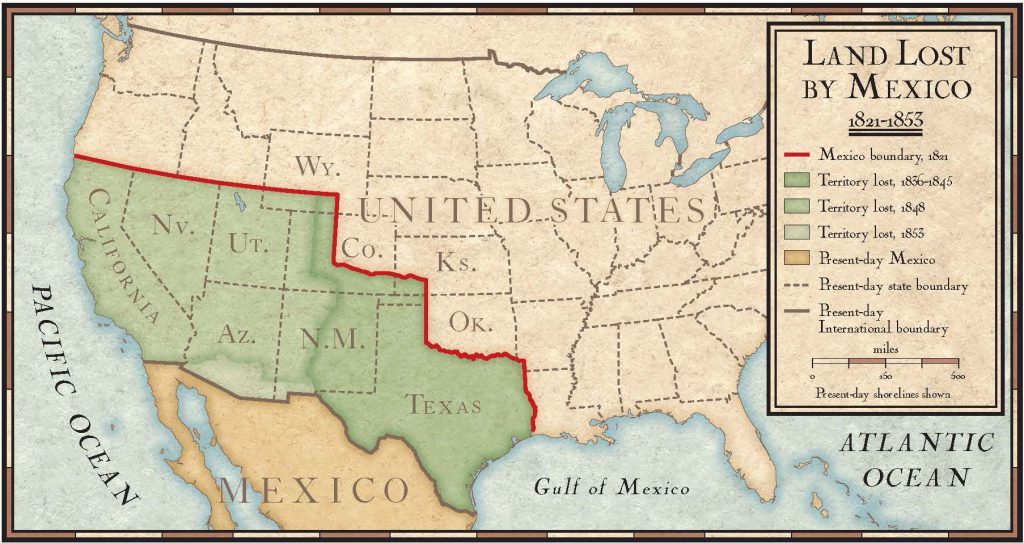
Cortina, on an ordinary day not much different from other days, was on horseback going about his day, making his way to a town he frequently visited, Brownsville, when he spotted a U.S. Marshall, Robert Shear, abusing a Mexican, who happened to be one of Cortina’s employees. Cortina told Marshall Shear to back off, but the sheriff purposely ignored Cortina. Cortina did not like that Marshall Shear was abusing his fellow citizen, yet alone one of his workers, especially being Mexican, so Cortina acted and took out a gun and shot Marshall Robert Shear, but purposely not killing him but hurting him badly. Cortina had so much influence around Brownsville that he would not be punished for shooting the Marshall, especially since he had a good reason to do so. This instance was a turning point in Cortina’s life, when he decided to put an end to Mexican people getting abused by U.S officials. Cortina realized the abuse that was going on and that it was likely not going to stop any time soon.3
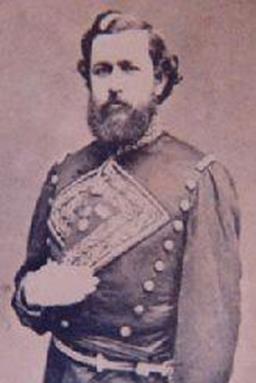
Cortina was a smart man and did something different from other rebels. He called for his fellow Mexican-American people to unite and form defenses against the violent Anglo-Americans. Cortina formed a group of people he himself armed and trained called the Cortinistas. He formed a plan to take over Brownsville.4 Cortina and his forces took up arms, and as he readied his men to take over Brownsville, he said, “Our object, as you have seen, has been to chastise the villainy of our enemies, which heretofore has gone unpunished. These have connived with each other, and form, so to speak, a perfidious inquisitorial lodge to persecute and rob us, without any cause, and for no other crime on our part than that of being of Mexican origin, considering us, doubtless, destitute of those gifts which they themselves do not possess.”5
Cortina knew that Mexicans were not committing any crimes, but in the eyes of Americans, just being of Mexican decent was crime enough to deserve abuse.6 Determined to make a change, Cortina, after his proclamation to the inhabitants of the State of Texas and especially to those of the city of Brownsville, was ready to put his hands in the fire. He decided to push back against the U.S. abuse of Mexicans. On September 28, 1859, Cortina, along with his group of Cortinistas, raided Brownsville with his built-up anger from all the abuse of Mexican people. He still fumed over the U.S. taking over what used to be Mexican land in the Mexican-American War. Cortina went into Brownsville and accomplished his goal of taking the town.7
On July 13, 1859, the first Cortina War started, which was based on taking control of Brownsville. Many people in Matamoros with power in 1859 (officials, governors, wealthy families) told Cortina to let go of Brownsville and back off. Cortina was determined to gain attention for his goal for the U.S. to stop the abuse of Mexican people by U.S. officials, so he was not willing to retreat from Brownsville any time soon without a fight. A group of twenty men from Brownsville called themselves the “Tigers.” They were opposed to Cortina taking over Brownsville and tried to force Cortina and his men out of Brownsville. Cortina’s supporters, the Cortinistas, were able to beat back the Tigers with no difficulty, and only a few of his men were injured. The Texan government felt threatened enough that it then called for the Texas Rangers to deal with Cortina and his takeover of Brownsville. Cortina and the Cortinistas then had to face the Texas Rangers. Cortina was so determined that he, along with his people, were even able to fend off the Texas Rangers, keeping Brownsville even longer. Cortina’s power over Brownsville had grown, so the Texas Rangers called for the Tigers to combine with them to stop Cortina, which again was not successful against Cortina’s forces. The Cortinistas, through their determination, were able to beat back both groups combined, which showed that they were committed to Cortina’s cause, and that they would fight for Cortina no matter what.8
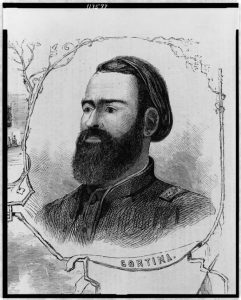
The problem that Cortina saw was that the United States government was not punishing their officials for abuse of Mexican-American people, leading them to do whatever they wanted to them. A man against a country really showed how he had the power and influence to express what many others of his fellow Mexicans were feeling in that time of uncertainty in the splitting of lands while they experienced hardships imposed by past U.S officials. Normal working-class Mexicans did not have the resources that Cortina did to demand a change, so Cortina took the initiative through physical battles to get the attention of the U.S. government.9
Cortina kept Brownsville under his control for two months, with various small fights against the Texas Rangers and the Tigers, but Cortina always came out victorious throughout these two months. The U.S. decided to send troops to Fort Brown in San Antonio, close enough to Brownsville so that Cortina would feel the pressure of a large army coming down on him. After the two months passed, in December of 1859, a second group came after Cortina under Captain John “Rip” Ford’s command, who was a higher official in the U.S. army.10 Cortina realized that he might have to back down if he had to face off against the U.S Army. The Cortinistas were able to push back against the U.S. army for a while, but soon after, Samuel Heintzelman, commander of Fort Brown, and Captain “Rip” Ford and some of the Texas Rangers and the Tigers all went after Cortina. With all the pressure from the U.S., Cortina had trouble keeping Brownsville under his control. Finally, Cortina retreated to the Burgos Mountains near Brownsville and decided that there had been enough fighting; besides, he had run out of resources and lost many men. Cortina was always in between all the crossfire, but never once got hit during that First Cortina War. Cortina tried to come back in one last effort to retake Brownsville, but the United States kept pushing back against Cortina, making it impossible to even touch Brownsville. The Battles of La Mesa and La Bolsa were the last two battles, after which the Cortinistas could no longer fight back against the U.S. Cortina along with the Cortinistas then fled to Mexico.11 Although Cortina fled to Mexico for around a year, he was not done putting pressure on the United States. He later came back with more force and gave birth to many other Cortina Wars.
- Will and John Gorenfeld, “Chasing Juan Cortina: The Mexican Bandit’s Raid on Brownsville in September 1859 Spurred the Texas Rangers into Action, and the U.S. Army Soon Took up His Trail,” Wild West (Weider History Group, February 1, 2016), 1. ↵
- Will and John Gorenfeld, “Chasing Juan Cortina: The Mexican Bandit’s Raid on Brownsville in September 1859 Spurred the Texas Rangers into Action, and the U.S. Army Soon Took up His Trail,” Wild West (Weider History Group, February 1, 2016), 2. ↵
- Will and John Gorenfeld, “Chasing Juan Cortina: The Mexican Bandit’s Raid on Brownsville in September 1859 Spurred the Texas Rangers into Action, and the U.S. Army Soon Took up His Trail,” Wild West (Weider History Group, February 1, 2016), 3-4. ↵
- Will and John Gorenfeld, “Chasing Juan Cortina: The Mexican Bandit’s Raid on Brownsville in September 1859 Spurred the Texas Rangers into Action, and the U.S. Army Soon Took up His Trail,” Wild West (Weider History Group, February 1, 2016), 5. ↵
- “PBS – THE WEST – Juan Cortina, ‘Proclamation to Texans’ and ‘Proclamation to the Mexicans of Texas’ (1859).” ↵
- Jerry D. Thompson, Cortina : Defending the Mexican Name in Texas, 1st ed., Fronteras Series: No. 6 (Texas A & M University Press, 2007), 71. ↵
- Jerry D. Thompson, Cortina : Defending the Mexican Name in Texas, 1st ed., Fronteras Series: No. 6 (Texas A & M University Press, 2007), 64. ↵
- Jerry D. Thompson, Cortina : Defending the Mexican Name in Texas, 1st ed., Fronteras Series: No. 6 (Texas A & M University Press, 2007), 65-66, 71-73. ↵
- “Juan Nepomuceno Cortina,” Columbia Electronic Encyclopedia, 6th Edition, March 2021, 1. ↵
- Will and John Gorenfeld, “Chasing Juan Cortina: The Mexican Bandit’s Raid on Brownsville in September 1859 Spurred the Texas Rangers into Action, and the U.S. Army Soon Took up His Trail,” Wild West (Weider History Group, February 1, 2016), 74-75. ↵
- Jerry D. Thompson, Cortina : Defending the Mexican Name in Texas, 1st ed., Fronteras Series: No. 6 (Texas A & M University Press, 2007), 74-75, 78, 79, 95. ↵
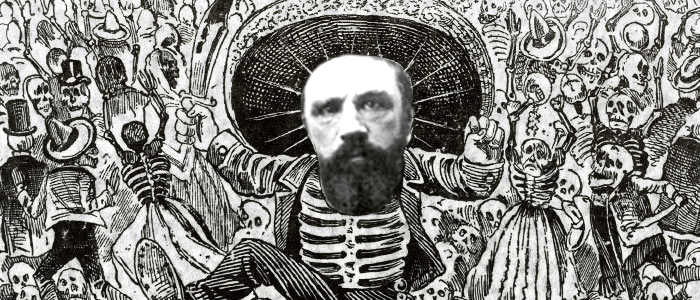
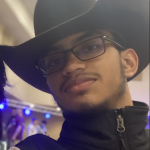


13 comments
Sophia Phelan
This was a completely new name to me and I can’t believe we didn’t learn about him in our history classes. Thank you for telling this story because it is important as Americans to remember that we need to strive to treat others better, especially in times of war, than we previously have.
Madeline Chandler
This was an extremely well-written article, and it was so detailed. It was so interesting because I did not know much information about Juan Cortina his will to fight for Mexican-Americans in the United States. It is so interesting that he shot a sheriff and did not have any repercussions. Because the town knew Cortina was in the right for protecting his Mexican employee. Good job, such an interesting time in history!
Grace Malacara
I’d never heard of Cortina before, and his story is remarkable. I enjoy reading about those who advocate for individuals who are disadvantaged or targeted. He refused to let the abuse of Mexicans continue; there was no excuse for the brazen harshness demonstrated to his people. Your post was really well-researched and well-written. Congratulations on your nomination!
Cassidy Colotla
This has been one of my favorite articles so far! I think it’s amazing Cortina was never hit during bottles even though he was in a lot of crossfire. As of Mexican decent myself, I am proud that he worked towards getting respect for Mexicans in his valiant effort and used his privilege resources for a good cause. Overall Luis, I think you did an amazing job sharing his story in history!
Vianne Beltran
Hi Luis,
I have never heard about Cortina but your article was a good way for me to learn more. It’s admirable that he used his position of wealth to make a positive change and defend those who needed it. Many people in his place would have stayed quiet I’m sure. I’m surprised he is not talked more about in Texas history. I grew up in San Antonio but have never heard him mentioned.
Katelyn Canales
Hello Luis! Wanted to give you a huge congratulations on receiving a nomination! I loved your article about Juan Cortina, and was overall glad I chose to keep reading it. You had such an interesting title, introduction, and sources. As a Hispanic woman, I enjoy reading Latin American history, and I think you hit the nail on the head with this one. As readers, you provide enough details about Juan that makes us support him all the way through his journeys of fighting for change from the U.S Government. Excellent topic! Definitely worth the read! Good Luck 🙂
Anissa Navarro
It was nice reading an article about someone who had stood up for the Mexican people. I had never known of these cortina wars, I do not recall ever hearing of these wars or this person. I am glad he used his resources to stand up for what he believed in and put his people first instead of Mexican pride and accepting defeat.
Paula Ferradas Hiraoka
Hello Luis,
First of all, congratulations on your nomination and getting your article published!
I personally think it’s a pretty good article with a lot of details. What I do like a lot about this are the different points of view, not only for the American side, but also for the Mexican side. Both of the sides having different thoughts and fighting for what they believe it was right.
Overall, amazing work and good luck!
Jacob Galan
This was an interesting article to read. I never knew about Juan Cortina but while reading this I found it surprising that one person and essentially a militia could defeat people who oppose what Juan was doing and the Texas Ranger. What I also found surprising is that he had never been shot during the battles that took place. What could have been added is what happened after he fled to Mexico and kept putting pressure on the United States.
Dylan Miller
I found this article really interesting! Texas history is always so exciting and important to learn about as locals, so reading articles about the history that us who we are today is great! I really like the use of images to portray Juan Cortina, really makes the article more coherent and understanding!